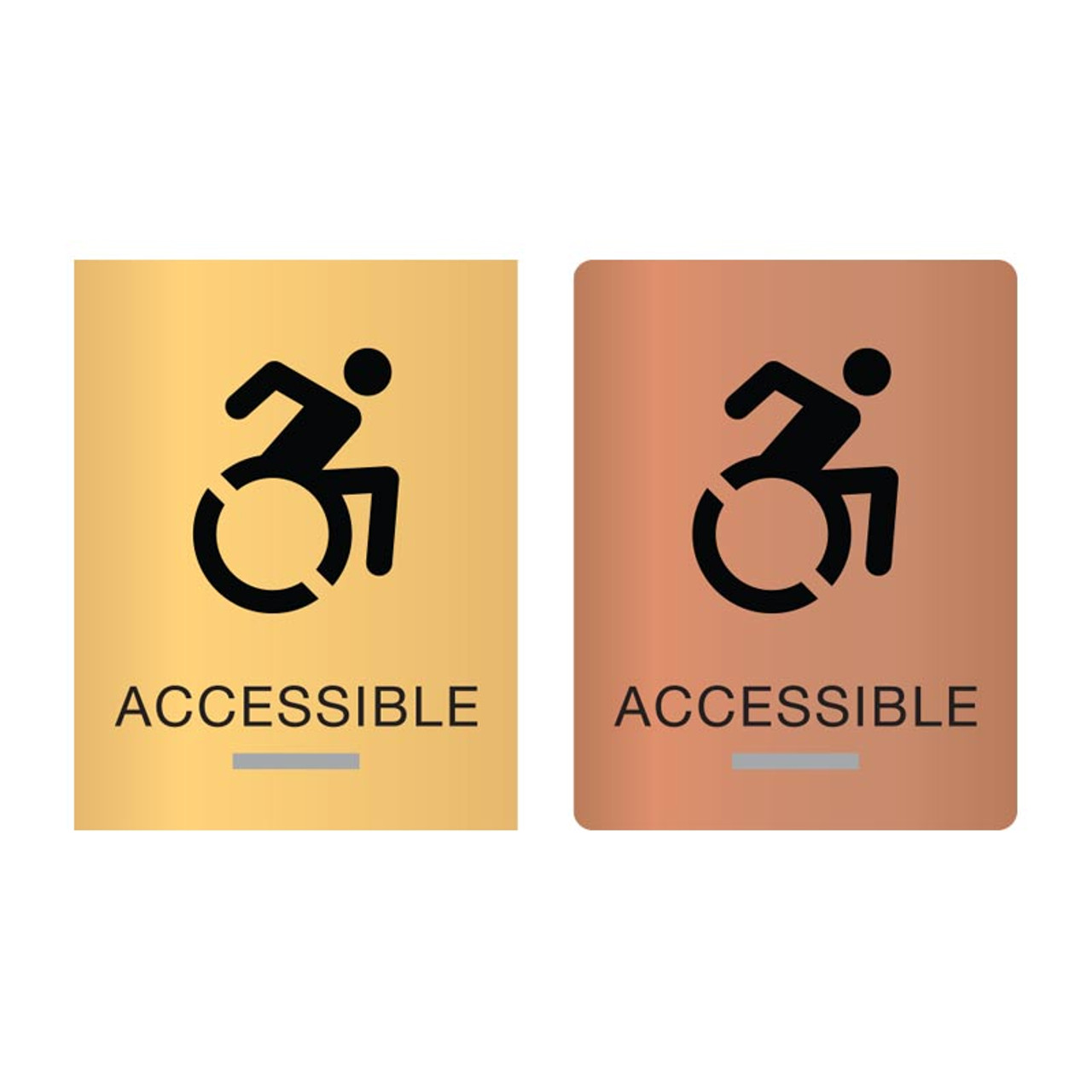Just How ADA Signs Improve Availability for Everyone
Just How ADA Signs Improve Availability for Everyone
Blog Article
Checking Out the Secret Attributes of ADA Signs for Enhanced Access
In the world of ease of access, ADA signs serve as silent yet effective allies, ensuring that rooms are navigable and comprehensive for individuals with handicaps. By incorporating Braille and responsive aspects, these indicators damage obstacles for the aesthetically damaged, while high-contrast shade plans and understandable typefaces provide to varied aesthetic requirements.
Value of ADA Conformity
Making certain compliance with the Americans with Disabilities Act (ADA) is essential for cultivating inclusivity and equal gain access to in public rooms and work environments. The ADA, enacted in 1990, mandates that all public facilities, employers, and transport services accommodate people with disabilities, guaranteeing they enjoy the very same civil liberties and opportunities as others. Conformity with ADA criteria not just meets legal obligations however likewise boosts a company's online reputation by demonstrating its commitment to variety and inclusivity.
One of the essential facets of ADA conformity is the application of obtainable signage. ADA indicators are developed to make certain that people with disabilities can easily navigate via rooms and structures. These signs must follow details standards pertaining to size, font style, shade comparison, and placement to guarantee exposure and readability for all. Properly implemented ADA signage helps get rid of barriers that people with disabilities frequently come across, thereby advertising their self-reliance and self-confidence (ADA Signs).
Furthermore, adhering to ADA policies can reduce the risk of lawful consequences and potential penalties. Organizations that fall short to abide by ADA guidelines might face claims or penalties, which can be both economically troublesome and destructive to their public picture. Hence, ADA conformity is important to promoting an equitable atmosphere for everyone.
Braille and Tactile Elements
The unification of Braille and responsive aspects into ADA signage embodies the concepts of availability and inclusivity. It is generally positioned below the equivalent message on signs to make certain that people can access the information without aesthetic aid.
Responsive elements prolong past Braille and consist of elevated personalities and symbols. These elements are made to be discernible by touch, enabling individuals to recognize space numbers, bathrooms, exits, and other important areas. The ADA establishes particular guidelines concerning the dimension, spacing, and positioning of these responsive aspects to enhance readability and ensure uniformity across different environments.

High-Contrast Color Design
High-contrast color systems play a critical function in boosting the exposure and readability of ADA signs for people with aesthetic impairments. These schemes are crucial as they optimize the difference in light reflectance in between message and background, ensuring that signs are easily discernible, also from a range. The Americans with Disabilities Act (ADA) mandates using specific color contrasts to accommodate those with minimal vision, making it an essential facet of compliance.
The efficacy of high-contrast colors depends on their capacity to stand out in numerous lights conditions, including poorly lit environments and areas with glow. Normally, dark message on a light background or light message on a dark background is used to attain optimal contrast. As an example, black message on a yellow or white history gives a raw visual difference that helps in fast acknowledgment and comprehension.

Legible Fonts and Text Dimension
When taking into consideration the style of ADA signs, the choice of legible typefaces and appropriate text size can not be overstated. The Americans with Disabilities Act (ADA) mandates that fonts have to be sans-serif and not italic, oblique, script, highly attractive, or of unusual type.
According to ADA guidelines, the minimal text height must be 5/8 inch, and it needs to increase proportionally with viewing range. Consistency in text dimension adds to a natural aesthetic experience, assisting individuals in browsing atmospheres successfully.
Furthermore, spacing in between lines and letters is integral to legibility. Appropriate spacing stops personalities from showing up crowded, improving readability. By sticking to these criteria, designers can significantly boost accessibility, making sure that signage serves its designated function for all individuals, no matter of their visual capacities.
Effective Placement Strategies
Strategic placement of ADA signs is necessary for optimizing availability and making certain compliance with legal criteria. ADA standards state that signs need to be placed at a height in between 48 to 60 inches from the ground to ensure they are within the line of view for both standing and seated individuals.
In addition, indicators need to be put nearby to the latch browse around here side of doors to permit very easy identification before entry. Consistency in sign placement throughout a facility enhances predictability, lowering complication and boosting general individual experience.

Conclusion
ADA signs play a vital duty in advertising ease of access by incorporating features that address the needs of individuals with specials needs. Integrating Braille and responsive components guarantees vital information is easily accessible to the visually impaired, while high-contrast shade schemes and legible sans-serif typefaces improve presence throughout different lighting problems. Effective positioning techniques, such as appropriate mounting elevations and calculated locations, additionally facilitate navigating. These components collectively cultivate a comprehensive atmosphere, underscoring the relevance of ADA conformity in making certain equal accessibility for all.
In the world of accessibility, ADA indicators serve as silent yet powerful allies, making sure that spaces are accessible and inclusive for individuals with disabilities. The ADA, established in 1990, mandates that all public centers, employers, and transportation solutions fit individuals with handicaps, guaranteeing they appreciate the exact same civil liberties and chances as others. ADA Signs. ADA signs are developed to guarantee that individuals with disabilities can easily navigate through areas and structures. ADA guidelines state that indications must be mounted at a height in between 48 to 60 inches from the ground to guarantee they are within the line of sight for both standing and seated people.ADA indications play an important role in advertising ease of access by incorporating attributes that attend to the needs of people with handicaps
Report this page